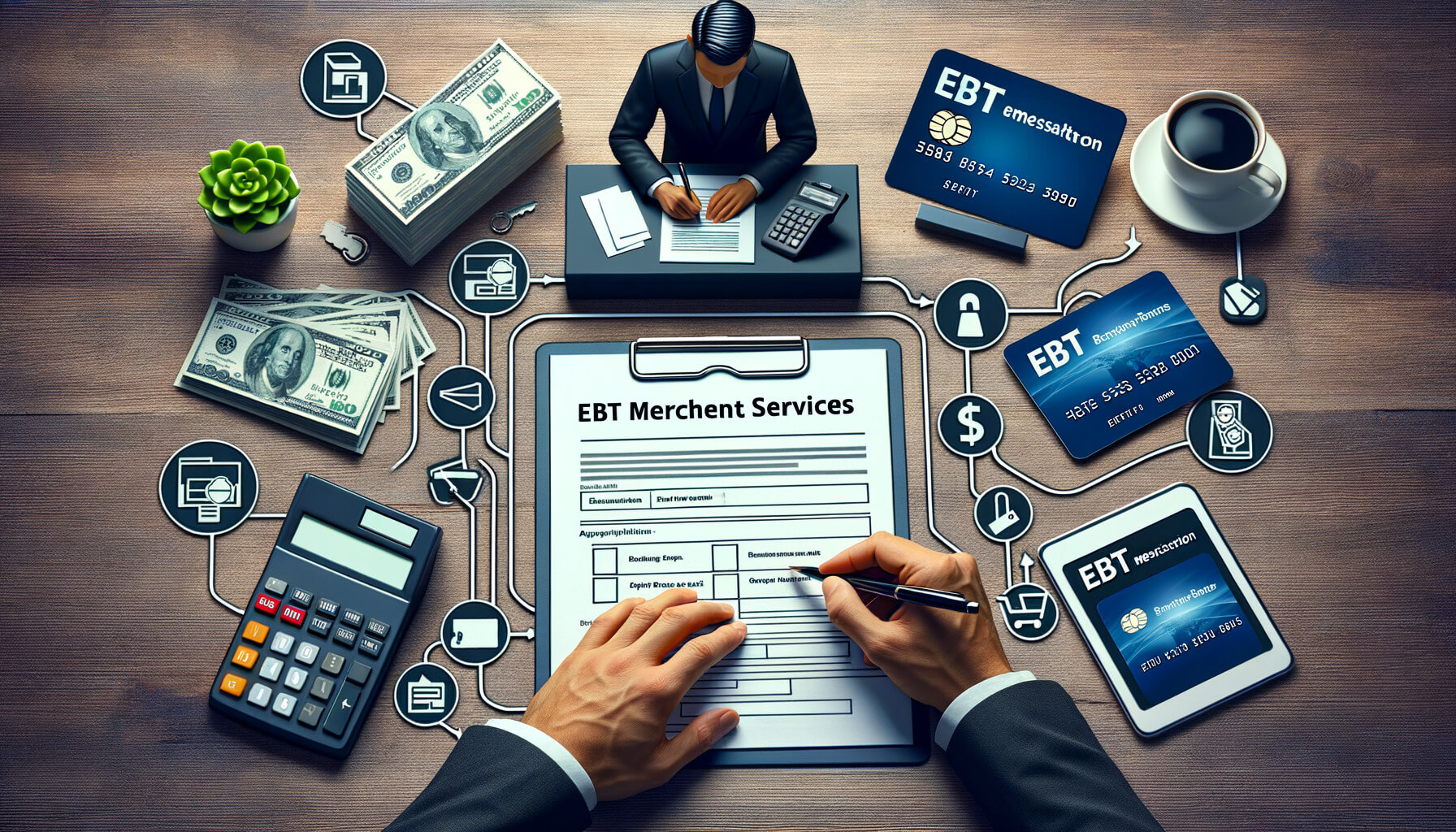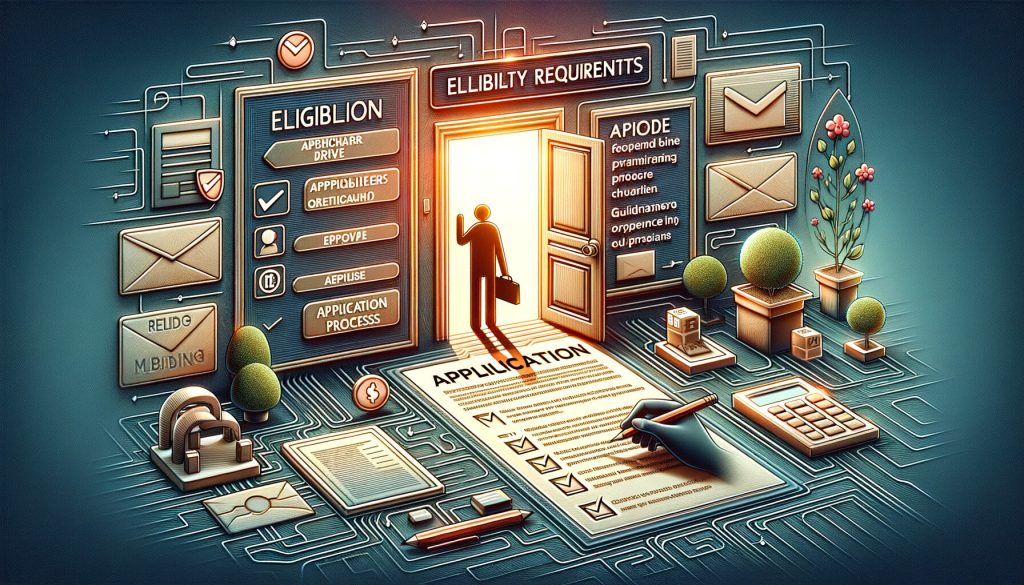
By Ethan Brooks November 4, 2024
In today’s retail landscape, accepting a variety of payment methods is crucial for store owners aiming to cater to a diverse customer base. One such payment method is the Electronic Benefits Transfer (EBT), which allows recipients of government assistance programs to purchase eligible items.
For store owners, becoming an EBT merchant can open doors to a broader clientele, including those who rely on Supplemental Nutrition Assistance Program (SNAP) benefits. Understanding EBT merchant services is essential for any store owner considering this option.
To begin with, EBT merchant services enable retailers to accept payments from customers who receive government assistance. This system is primarily used for SNAP benefits, formerly known as food stamps, which help low-income individuals and families purchase food. By accepting EBT payments, store owners can not only increase their customer base but also contribute to their community by providing access to essential goods for those in need.
The process of becoming an EBT merchant involves several steps, starting with understanding the eligibility criteria. Generally, any retail store that sells food items can apply to become an EBT merchant. However, the store must meet specific requirements set by the United States Department of Agriculture (USDA), which oversees the SNAP program.
These requirements include offering a variety of staple foods, such as dairy products, bread, cereals, fruits, vegetables, and meat, poultry, or fish. Additionally, the store must meet certain sales thresholds, either in terms of the percentage of total sales that come from staple foods or the number of different staple food items available.
Once a store owner determines their eligibility, the next step is to apply for authorization from the USDA. This involves completing an application form, which can be done online through the USDA’s Food and Nutrition Service (FNS) website. The application requires detailed information about the store, including its location, ownership, and the types of products sold. Store owners must also provide documentation, such as a business license and tax identification number, to verify their business’s legitimacy.
After submitting the application, the USDA will review it to ensure the store meets all necessary criteria. This process can take several weeks, during which the USDA may request additional information or clarification. If the application is approved, the store will receive an FNS number, which is required to process EBT transactions.
With authorization in hand, the next step is to set up the necessary equipment to accept EBT payments. This typically involves obtaining a point-of-sale (POS) terminal that can process EBT cards. Many payment processing companies offer EBT-compatible terminals, and some may even provide them at no cost to the retailer. It’s important for store owners to choose a reliable service provider that offers good customer support and competitive transaction fees.
Once the equipment is installed and tested, store owners should train their staff on how to handle EBT transactions. This includes understanding which items are eligible for purchase with SNAP benefits and how to process returns or refunds. Proper training ensures a smooth transaction process and helps prevent any potential issues or misunderstandings with customers.
Understanding the Benefits of Accepting EBT Payments
Accepting EBT payments offers numerous benefits for businesses. Firstly, it expands your customer base by allowing individuals who rely on government assistance to shop at your store. According to the United States Department of Agriculture (USDA), over 42 million Americans received SNAP benefits in 2020. By accepting EBT payments, you tap into this significant market and increase your sales potential.
Secondly, accepting EBT payments can enhance customer loyalty. Customers who rely on government assistance often have limited options when it comes to purchasing essential items. By providing them with the convenience of using their EBT cards at your store, you establish a positive relationship and encourage repeat business.
Eligibility Requirements for EBT Merchant Services

Before applying for EBT merchant services, it is crucial to ensure that your business meets the eligibility requirements. Generally, businesses must be engaged in the sale of eligible food items, such as grocery stores, supermarkets, and farmers markets. However, certain types of businesses, such as restaurants, are not eligible to accept EBT payments.
Additionally, businesses must have a valid tax identification number (TIN) and comply with all federal, state, and local laws and regulations. It is essential to review the specific eligibility criteria outlined by the USDA or the state agency responsible for administering EBT programs in your area.
Step-by-Step Process to Apply for EBT Merchant Services for Your Retail Business
Applying for EBT merchant services for your retail business is a crucial step in expanding your customer base and providing essential services to those who rely on government assistance programs. The process, while straightforward, requires careful attention to detail to ensure compliance with federal and state regulations. To begin, it is essential to understand what EBT, or Electronic Benefits Transfer, entails.
EBT is an electronic system that allows recipients of government assistance programs, such as the Supplemental Nutrition Assistance Program (SNAP), to pay for goods using a card similar to a debit card. By accepting EBT payments, your store can cater to a broader audience, including low-income families who depend on these benefits for their daily needs.
The first step in applying for EBT merchant services is to determine your eligibility. Generally, most retail businesses that sell food items are eligible to accept EBT payments. However, it is crucial to verify that your store meets the specific requirements set by the United States Department of Agriculture (USDA), which administers the SNAP program. These requirements typically include offering a variety of staple foods, such as dairy products, bread, and cereals, as well as ensuring that a significant portion of your sales comes from these items.
Once you have confirmed your eligibility, the next step is to complete the application process. This involves filling out the USDA’s Food and Nutrition Service (FNS) application, which can be done online through their website. The application will require detailed information about your business, including your Employer Identification Number (EIN), business structure, and the types of products you sell. It is important to provide accurate and complete information to avoid delays in the approval process.
After submitting your application, the USDA will review it to ensure that your business meets all the necessary criteria. This review process may take several weeks, so it is advisable to apply well in advance of when you plan to start accepting EBT payments. During this time, the USDA may request additional documentation or clarification on certain aspects of your application. Responding promptly to these requests can help expedite the approval process.
Once your application is approved, you will receive an FNS number, which is required to set up EBT processing equipment in your store. You will need to work with a third-party payment processor to install the necessary hardware and software to accept EBT payments. Many payment processors offer EBT services, so it is important to compare their fees and services to find the best fit for your business.
In addition to setting up the equipment, it is essential to train your staff on how to process EBT transactions correctly. This includes understanding which items are eligible for purchase with EBT benefits and how to handle any issues that may arise during a transaction. Proper training ensures a smooth experience for both your employees and customers.
Finally, it is important to stay informed about any changes to EBT regulations and requirements. The USDA periodically updates its guidelines, and staying compliant is crucial to maintaining your ability to accept EBT payments. By following these steps and remaining vigilant about compliance, your retail business can successfully apply for and implement EBT merchant services, ultimately benefiting both your store and the community you serve.
Required Documentation: What You Need to Prepare

When applying for EBT merchant services, you will need to gather specific documentation to support your application. The required documentation may vary slightly depending on the EBT service provider, but generally, you will need the following:
- Proof of Business Ownership: Provide documentation that proves you are the owner or authorized representative of the business, such as a business license or articles of incorporation.
- Tax Identification Number: Include your business’s tax identification number, such as an Employer Identification Number (EIN) or Social Security Number (SSN).
- Business Address Verification: Submit documents that verify your business’s physical address, such as utility bills or lease agreements.
- Licenses and Permits: Depending on your location and the nature of your business, you may need to provide copies of any licenses or permits required by your state or local government.
- Bank Account Information: Provide details of the bank account where you want your EBT payments to be deposited.
Completing the EBT Merchant Services Application Form

The EBT merchant services application form is a crucial component of the application process. It requires accurate and detailed information about your business. Here are some key sections you should be prepared to complete:
- Business Information: Provide your business name, address, contact information, and type of business.
- Ownership Details: If applicable, provide information about the owners or partners of your business, including their names, addresses, and social security numbers.
- Product Information: Describe the types of eligible food items your business sells, such as fresh produce, dairy products, and canned goods.
- Store Layout: Provide a layout or floor plan of your store, indicating the location of checkout counters and any designated areas for EBT transactions.
- Equipment and Technology: Specify the equipment and technology you plan to use to process EBT payments, such as point-of-sale (POS) systems or electronic card readers.
Choosing the Right EBT Service Provider: Factors to Consider
Selecting the right EBT service provider is crucial for a seamless and efficient payment process. Consider the following factors when choosing a provider:
- Fees: Compare the fees charged by different EBT service providers. Look for transparent pricing structures and ensure that the fees align with your budget and business needs.
- Customer Support: Evaluate the level of customer support provided by each EBT service provider. Look for providers that offer 24/7 support and have a reputation for prompt and helpful assistance.
- Range of Services: Consider the additional services offered by the EBT service provider. Some providers may offer value-added services, such as online reporting and analytics, which can help you manage your business more effectively.
- Integration with Existing Systems: If you already have a point-of-sale (POS) system or other payment processing systems in place, ensure that the EBT service provider can seamlessly integrate with your existing infrastructure.
Setting Up EBT Equipment and Software: A Comprehensive Overview

Once your application is approved, you will receive the necessary equipment and software to accept EBT payments. The setup process typically involves the following steps:
- Install EBT Equipment: Follow the instructions provided by the EBT service provider to install the necessary equipment, such as a card reader or PIN pad, at your point of sale.
- Connect to the Network: Connect the EBT equipment to your business’s network or internet connection. Ensure that the connection is secure and reliable to protect customer data.
- Test the Equipment: Before accepting EBT payments from customers, conduct thorough testing of the equipment to ensure it is functioning correctly. Test different payment scenarios to ensure a smooth transaction process.
- Train Staff: Train your staff on how to use the EBT equipment and software. Provide them with clear instructions on how to process EBT payments, handle customer inquiries, and troubleshoot any issues that may arise.
Training and Compliance: Ensuring Proper Usage of EBT Services
To ensure proper usage of EBT services, it is essential to train your staff and comply with the rules and regulations set forth by the EBT program. Consider the following steps:
- Staff Training: Provide comprehensive training to your staff on how to properly process EBT payments, including understanding the different types of benefits and how to handle customer inquiries.
- Compliance with EBT Program Rules: Familiarize yourself with the rules and regulations of the EBT program. Ensure that your business complies with all requirements, such as not allowing the purchase of prohibited items or engaging in fraudulent activities.
- Regular Audits and Reviews: Conduct regular audits and reviews of your EBT transactions to ensure compliance and identify any potential issues. Address any discrepancies promptly and take corrective action as necessary.
How EBT Merchant Services Can Enhance Your Store’s Offerings
Maximizing the benefits of EBT merchant services can significantly enhance your store’s offerings, providing a valuable service to customers who rely on government assistance programs. As a store owner, understanding how to apply for and implement these services is crucial for expanding your customer base and increasing sales. The process of becoming an EBT-authorized retailer involves several steps, each requiring careful attention to detail and compliance with federal regulations.
To begin with, it’s essential to understand what EBT, or Electronic Benefits Transfer, entails. EBT is an electronic system that allows recipients of government assistance programs, such as the Supplemental Nutrition Assistance Program (SNAP), to pay for goods using a card similar to a debit card. By accepting EBT payments, your store can cater to a broader demographic, including low-income families who depend on these benefits for their daily needs.
The first step in applying for EBT merchant services is to ensure your store meets the eligibility criteria set by the United States Department of Agriculture (USDA). Generally, your store must sell staple foods, which include dairy products, bread, cereals, fruits, vegetables, and meats. Additionally, your store should offer a variety of these items to qualify as a staple food retailer. Once you confirm your eligibility, the next step is to complete the application process.
Applying for EBT merchant services involves submitting an application through the USDA’s Food and Nutrition Service (FNS) website. This application requires detailed information about your business, including your Employer Identification Number (EIN), business license, and a list of the staple foods you offer. It’s crucial to provide accurate and complete information to avoid delays in the approval process. After submitting your application, the USDA will review it and may conduct a site visit to verify the information provided.
Once your application is approved, the next phase is setting up the necessary equipment to process EBT transactions. This typically involves acquiring a point-of-sale (POS) terminal that is compatible with EBT cards. Many payment processing companies offer EBT-compatible terminals, and some may even provide them at a reduced cost or for free as part of their service package. It’s important to choose a reliable provider that offers technical support and training to ensure smooth operation.
In addition to the technical setup, training your staff on how to handle EBT transactions is vital. Employees should be familiar with the types of products eligible for purchase with EBT benefits and how to process these transactions efficiently. Providing excellent customer service to EBT cardholders can enhance their shopping experience and encourage repeat visits.
Furthermore, promoting your store as an EBT-friendly establishment can attract more customers. Consider advertising your EBT acceptance through signage in your store and on your website. Engaging with local community organizations that support low-income families can also help spread the word about your services.
Frequently Asked Questions (FAQs) about EBT Merchant Services
Q1: What types of businesses are eligible for EBT merchant services?
Businesses engaged in the sale of eligible food items, such as groceries, farmer’s market products, and meal delivery services, are generally eligible for EBT merchant services.
Q2: How long does the application process take?
The application process can take several weeks, depending on the EBT service provider and the completeness of your application.
Q3: Can I use my existing point-of-sale system with EBT merchant services?
In most cases, EBT service providers offer compatibility with existing point-of-sale systems. However, it is essential to confirm this with your chosen provider.
Q4: Are there any fees associated with EBT merchant services?
Yes, EBT service providers typically charge fees for their services. These fees may include transaction fees, equipment rental fees, and monthly service fees.
Q5: How can I troubleshoot issues with EBT equipment or software?
If you encounter any issues with your EBT equipment or software, contact your EBT service provider’s customer support for assistance. They will guide you through the troubleshooting process.
Conclusion
Applying for EBT merchant services can be a valuable step for businesses looking to expand their customer base and contribute to the welfare of their communities. By following the step-by-step guide outlined in this article, merchants can navigate the application process successfully.
Remember to gather all the required documentation, choose the right EBT service provider, and ensure proper setup and training for your staff. By accepting EBT payments, you can provide a convenient and secure payment option for eligible individuals and families, while also boosting your business’s growth and success.